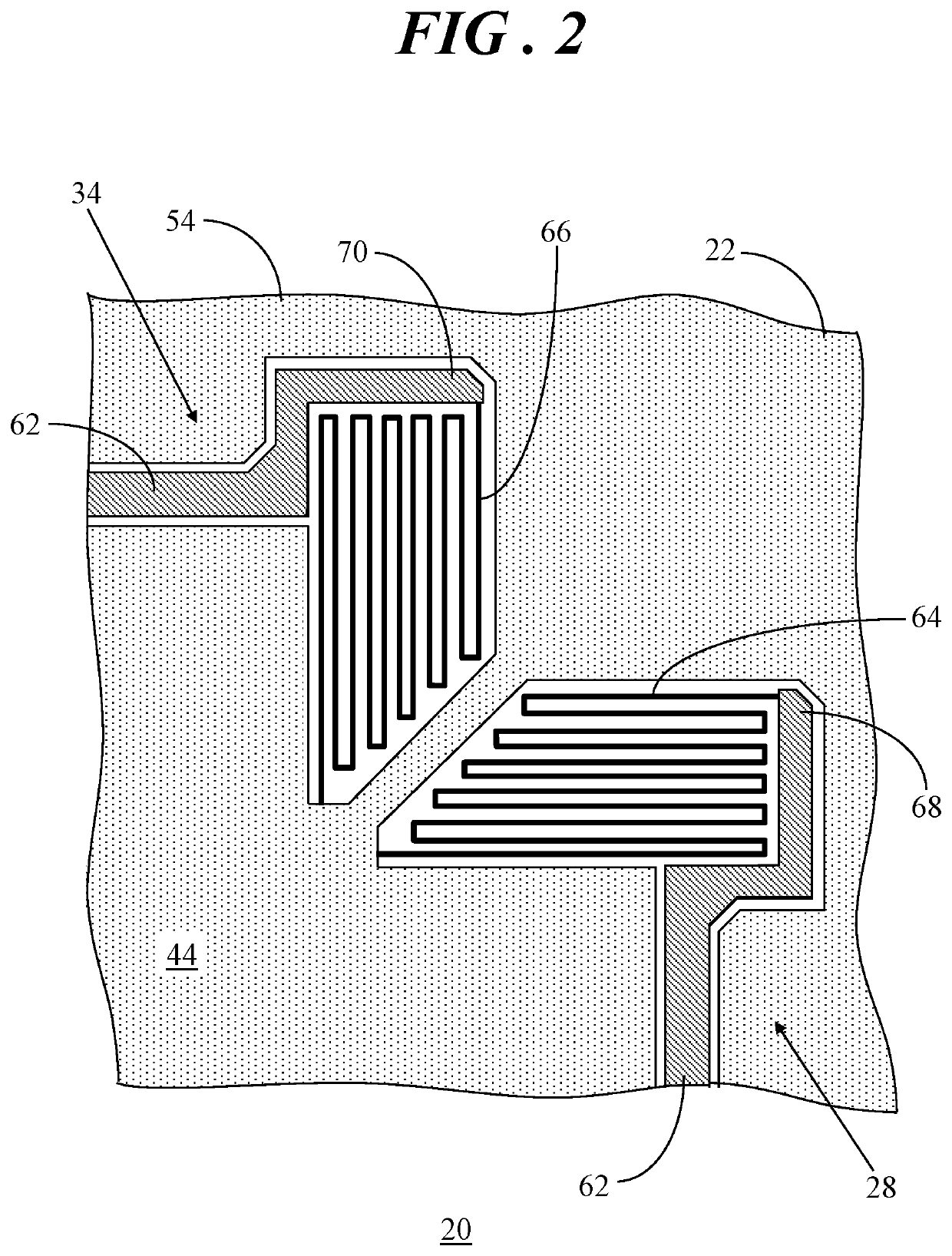Single axis inertial sensor with suppressed parasitic modes
a single-axis inertial sensor and parasitic mode technology, applied in the field ofinertial sensor devices, can solve the problems of limited sensitivity of z-axis teeter-totter accelerometer sensors
- Summary
- Abstract
- Description
- Claims
- Application Information
AI Technical Summary
Benefits of technology
Problems solved by technology
Method used
Image
Examples
Embodiment Construction
[0010]In overview, the present disclosure concerns microelectromechanical systems (MEMS) inertial sensors with enhanced suppression of parasitic modes, and therefore enhanced sensitivity. More particularly, embodiments entail MEMS accelerometer devices capable of sensing acceleration forces along the Z-axis while suppressing parasitic lateral modes. In general, embodiments described herein provide differential sensing with enhanced sensitivity by the use of multiple lever structures connected to the proof mass that enable translational motion of the proof mass in response to acceleration along the Z-axis while largely limiting motion in the lateral directions along the X- and Y-axes (i.e., the lateral parasitic modes) to effectively enhance sensor sensitivity and thereby reduce noise and increase resistance to electromagnetic interference. Further, a translational motion based approach, as opposed to prior rotational or teeter-totter motion based approaches, can yield improvements i...
PUM
 Login to View More
Login to View More Abstract
Description
Claims
Application Information
 Login to View More
Login to View More - R&D
- Intellectual Property
- Life Sciences
- Materials
- Tech Scout
- Unparalleled Data Quality
- Higher Quality Content
- 60% Fewer Hallucinations
Browse by: Latest US Patents, China's latest patents, Technical Efficacy Thesaurus, Application Domain, Technology Topic, Popular Technical Reports.
© 2025 PatSnap. All rights reserved.Legal|Privacy policy|Modern Slavery Act Transparency Statement|Sitemap|About US| Contact US: help@patsnap.com



